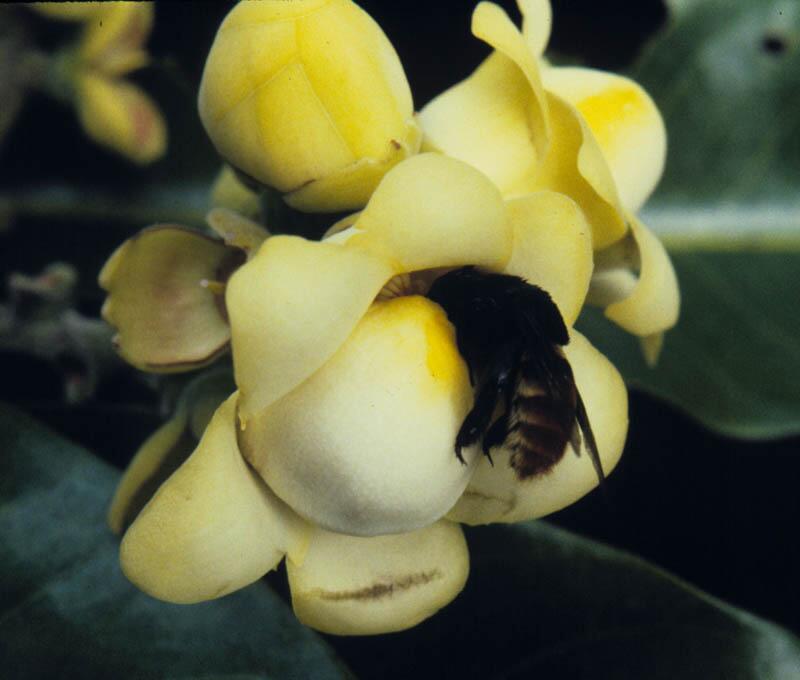Lecythidaceae
Bertholletia Bonpl.

Kingdom: Plantae Rank: Genus Parent: Lecythidaceae Status: Valid
Common Names:
- Brazil nut, castaña - English, Peru
Morphological Description
Diagnosis: Oblong leaves with a whitish cast on the abaxial surface; petals that are tightly pressed to the androecial hood for their lower half and then curled under at their apices; hard woody fruits that fall to the ground with the seeds inside; seeds with a boney testa; and embryo without differentiated cotyledons.
Vegetative Morphology
Leaves: Leaves distichous, at ends of stout twigs (ca. 5 mm diameter); venation brochidromous, the tertiary veins reticulate.
Stipules: Stipules absent, at least in adult trees.
Exudate: Exudate reddish sap.
Reproductive Morphology
Flowers: Flowers zygomorphic, ca. 3 cm diam.; calyx enclosed in bud, with apical slit, with 2 calyx-lobes at anthesis; petals 6, curled under at apices; androecium with staminal ring and hood, the appendages of hood curved inward at apices but not forming complete coil, the staminodia of the hood without anthers, without fodder pollen; the anthers <2 mm long, with lateral dehiscence; ovary usually 4-locular, the style well-defined, obliquely oriented.
Fruit: Fruits dehiscent, globose, the opercular opening smaller in diam. than diam. of seeds.
Seeds: Seeds triangular in cross section, not embedded in pulp, without wing, aril, or sarcotesta, the testa glabrous, boney; embryo without differentiated cotyledons.
Other
Uses: See description of Bertholletia excelsa.
Distribution: A monotypic genus found throughout Amazonia in Venezuela, Guyana, Surinam, French Guiana, Peru, Brazil, and Bolivia.
Ecology: See description of Bertholletia excelsa.
Notes: There is variation in fruit size and shape but this does not merit taxonomic recognition.